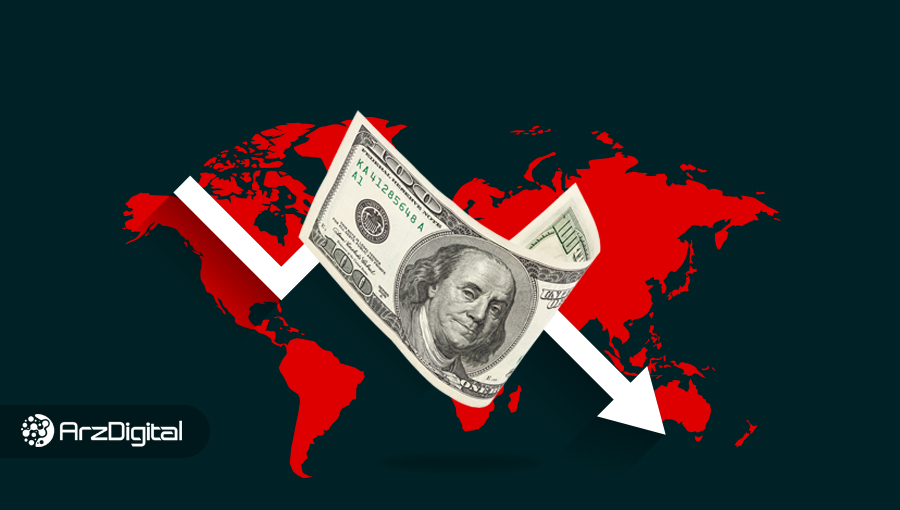How Have Fiat Currencies Brought The World To The Brink Of Destruction And Bankruptcy?
Today, The US Dollar Is The Uncrowned Ruler Of The World Economy. The Main Currency For International Exchanges, Settlements, Investments, And Large Bank Loans Is The US Dollar; Therefore, It Is Obvious That America Has More Advantages than many Countries.
The influence of this powerful fiat currency, in addition to the economy, is visible in politics, culture, art, and even world history. How have fiat currencies such as the dollar brought us under the domination of authoritarian governments, and how do financial incentives work in the world?
There is no doubt that with a better understanding of the mechanism of the international economy, we can think of more specific and efficient ideas to solve the existing financial problems. In this Article for help, Article An entrepreneur named Jimmy Song takes a critical look at the history of the dollar and how it dominates the world of economics, politics, and culture.
It should be noted that the developer is Jimmy Song Bitcoin. He is a professor at the University of Texas and a writer with more than 20 years of experience in programming. Join us to learn more about the impact of fiat currencies, such as the dollar, on the current state of the world by examining the world economy from Sang’s point of view.
Bretton Woods Agreement and its Effect on the world economy
One of the essential agreements of the 20th century is the Bretton Woods Agreement, which was signed by representatives of 44 countries in 1944. According to this agreement, the US dollar replaced gold as the new financial standard and global reserve currency.
As you will read below, this agreement raised America’s economic power several notches. In addition, Bretton Woods was an essential step in establishing the international organizations of the World Bank (World Bank) and the International Monetary Fund (IMF), which were formed with the support of the United States to oversee this new economic system.
Bretton Woods is the name of a place in the US state of New Hampshire that hosted a conference to create a “New World Monetary Order” and solve the economic problems caused by World War II. The result of this meeting was the signing of the Bretton Woods Agreement, which turned the table in favor of the United States, But in practice, it did not end well for the world economy.
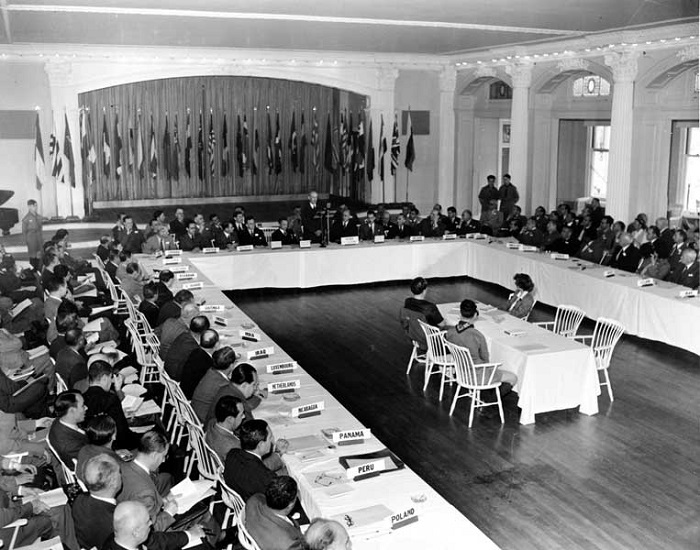 A picture of the Bretton Woods meeting
A picture of the Bretton Woods meeting
The problem stems from the fact that in the previous monetary system, the gold standard could no longer meet the economic needs after the world wars. After World War I, the payment of reparations and financial problems caused by the lack of gold reserves created chaos and fueled the formation of World War II. It was difficult for countries following different fiscal policies to return to the gold standard system as it was implemented before the world wars.
Preventing a return to the gold standard
Many countries tried to maintain the gold standard as the basis of their national currency. They simultaneously took advantage of the flexibility of fiat money, such as the possibility of printing money by the central bank. Therefore, the new solution proposed and approved at the Bretton Woods Conference was to add an intermediary for the redemption and conversion of gold.
Before World War I, gold could be exchanged directly at banks. Each ounce of gold was traded at $20.67 in the United States and the United Kingdom at 4.25 pounds. National currencies were backed by gold, and the ability to convert money into gold made money scarce. Thus, gold backed most national currencies and made the international exchange of fiat currencies easier. Also, the gold standard prevented fiat currencies from fluctuating in value.
The emergence of central banking changed this issue; Because some central banks spent much more than their reserves and had to suspend the convertibility of the currency into gold; Especially during World War I, central banks started printing money.
The newly printed money had the cover of law with the promise of being convertible into gold, But it failed in practice. The result of such actions can be easily predicted: currencies backed by less gold lost their value and experienced severe inflation.
In the last decades of the 19th century until the First World War in 1914, the gold standard economic system played an essential role in Europe’s economic and cultural prosperity, to the extent that this period is known as the “Belle Époque” or Golden Age.
Therefore, maintaining the gold standard was desirable for everyone; Because gold could make international exchanges very easy. Also, its rarity made it difficult for any country to cheat.
Why was America the winner of Bretton Woods?
The critical issue at the time of the Bretton Woods agreement was that at that time, the United States owned about three-quarters of the world’s gold; Because this country had a large trade surplus compared to other countries; It means that this country’s export boom was more than its import. Thus, other countries had to send gold to the United States in exchange for goods.

The countries involved in World War II in Europe only spent money and had no commercial production. Eventually, when other countries ran out of gold reserves, the United States lent them money in exchange for gold. doYou can easily guess what the result of this equation will be. The winning card was undoubtedly in the hands of the United States.
Representatives of different countries at the Bretton Woods conference decided to make gold convertible with an intermediate layer. Instead of returning to the strict gold standard, the convertibility of fiat currencies to gold was agreed to be done through the medium of dollars. Thus, instead of using gold to settle international transactions, the dollar was now supposed to be used as a settlement currency.
In the meantime, the United States also committed to maintaining gold reserves for other countries central banks for $35 per ounce. It should be noted that eleven years before the Bretton Woods agreement and Franklin Roosevelt’s Executive Order 6102, the convertibility of dollars into gold was canceled for the citizens of the United States.
The Bretton Woods Agreement resulted in the replacement of the dollar instead of gold as the medium of international exchange, which in Effect, handed over the superior economic power to the United States.
The superiority of the United States due to the dominance and hegemony of the dollar
As we said earlier, the gold standard was adequate because no government could cheat. The international balance of payments required the actual delivery of gold. This means that any additional money printing would drain gold from countries and bring their economies one step closer to bankruptcy. Therefore, the economists and politicians of the countries did not have much desire to print the national currency indiscriminately.
 Indiscriminate printing of dollars in America can threaten the entire world economy.
Indiscriminate printing of dollars in America can threaten the entire world economy.
It is worth noting that the gold exchange standard adopted at the Bretton Woods conference was supposed to have similar benefits. The dollar was supposed to be backed by gold to control any additional printing of the US dollar. However, the effectiveness of this plan was not measured.
The new standard effectively gave the United States a unique power to print dollars that others had to accept, Even if the new dollars were not backed by physical gold. After Bretton Woods, countries did not transfer gold for their international settlements; Rather, they exchanged dollars.
After the Bretton Woods Agreement, the monetary dominance of the United States over other countries was strengthened based on the dollar standard. The ability to print money that all countries could use to settle their trade exchanges gave the United States more power than the rest. This was while, at that time, the other superpower of the world, the Soviet Union, used war, espionage, and conspiracy to expand its sphere of influence.
Ultimately, the dominance of American monetary imperialism won out over its rival’s different strategy, and even the Soviet Union had to resort to the Eurodollar (the dollar outside the United States) to settle its international transactions.
Eurodollar and the story of international dollar loans
Eurodollar is a dollar that is exchanged outside of the United States, mainly through European banks. After Bretton Woods, European banks were not considered a subsidiary of the Federal Reserve System; But they had to start lending dollars. Currently, banks in other parts of the world also offer dollar loans.
Due to the US-Soviet Cold War, the communist country of the Soviet Union could not receive dollar loans from US banks. However, since there were communist groups and parties throughout Europe at the time, some European banks affiliated with communists answered directly to Moscow. The critical point was that the power of the dollar brought even the Soviet Union to its knees!
The hegemony (dominance) of the dollar in international transactions clearly and widely benefited the United States; Because this country had practically become the central bank for other central banks of the world. The dollar hegemony continues, and many non-US banks give dollar loans in Europe and other parts of the world.
Therefore, the countries’ central banks are forced to save dollars for lending. Still, since these dollars support countries’ fiat currencies, their excessive lending can drain banks’ reserves and lead to hyperinflation in countries.
The oil dollar and compensation for the extravagance of the United States

It was predictable that the United States would use its power to print money and spend it worldwide.
Government welfare and insurance programs such as Medicare and Medicaid began in the 1960s, and other programs such as Social Security were expanded. The result of these extravagances was nothing but inflation for other countries.
Also, various Cold War operations were financed by fiat money, the most expensive of which was Vietnam. The US paid for all these programs by printing dollars not backed by gold.
These costs and excessive dollar printing worried other central banks. In the early 1970s, a large amount of gold was repurchased. The supply of dollars compared to the potential US gold reserves could only mean one thing: the Federal Reserve was bankrupt.
These concerns caused other countries to turn to gold by threatening to convert their dollars; As a result, Richard Nixon suspended the dollar’s convertibility into gold in August 1971. This suspension was supposed to be temporary, But finally, it became permanent.
Nixon thought that the suspension could be ended by strengthening the dollar. Suspending convertibility is what the Bank of England has done many times in its 300-year history. However, maintaining the dollar again required fiscal discipline, A problem never seen in the United States. As a result, the temporary moratorium quickly became permanent, and the inflation of the 1970s severely weakened the American economy.
Oil exchanges saved the dollar.
The suspension of gold convertibility threatened the dollar’s supremacy; Therefore, Nixon found the solution in black gold, oil. This transition was a bit difficult and expensive and brought about the inflation of the 1970s in America. In other words, we can say that the inflation of the 1970s paid for the extravagances of the 1960s.
The US government concluded a series of contracts with oil-producing countries, including Saudi Arabia, to maintain the dollar’s dominance to exchange oil for US dollars. The term “Petrodollar” was born at this time.
Oil dollars are those oil-producing countries obtain and then use to buy goods and services from other countries or keep as dollar reserves in central banks.
The petrodollar system increased demand for the US dollar in international markets and re-established US economic power by making it the primary medium of international exchange for the petrochemical industry.
After a short stroke in the 1970s, the United States reassigned the dollar’s position as the currency of international settlement with the support of Saudi Arabia.
Global Cantillon effect and brain drain
 Richard Cantillon, an 18th-century Irish economist
Richard Cantillon, an 18th-century Irish economist
How effectively does dollar hegemony affect the American people and people in other parts of the world? In this section, reviewing an idea proposed by Richard Cantillon, an 18th-century Irish economist, is good.
Based on this idea, known as the “Cantillon Effect,” the distribution of money in the economy can affect prices and the distribution of wealth; In such a way, the first people who receive the money after its initial distribution get the most benefit from it.
Cantillon believed that the more intermediaries people received the newly printed money, the more problems they would have, including debt and inflation—the profit and income generated from the distribution of cash flow only into the pockets of the rich.
According to Cantillon’s work, powerful and wealthy people become more powerful and more prosperous every day. On the other hand, people who do not benefit from power and wealth are caught in more weakness and problems every day.
The Cantillon effect can cause an unbalanced distribution of money and power not only at a country’s level but also at the international level. The printer of the dollar, the world settlement currency, is the United States; Therefore, US citizens will be the first to benefit from the newly printed money.
In contrast, citizens of a country like China must wait to earn dollars after receiving wages for the goods they sell in America; Hence, salary earners in the United States are usually paid more.
 Cantillon says the poor are getting poorer, and the rich are getting richer.
Cantillon says the poor are getting poorer, and the rich are getting richer.
Thus, manufacturers prefer to move their factories and branches to countries that are lower in the Cantillon hierarchy and have less access to distributed money.
Since the 1970s, US manufacturing businesses have moved to countries with cheaper labor. This problem caused the lack of many suitable jobs for the middle class in America and this country’s dependence on the production line of other countries, which could make America vulnerable—however, the dominance of power and increased income-generating opportunities compensated for this gap.
American business success and elite attraction
Many rich people live in America, and one of the main reasons is the global reserve currency, the dollar. The best and most profitable jobs and businesses are formed in the United States. This trend has caused many Americans to believe in a kind of exceptionalism that is more like narcissism. and ts.
Widespread commercial success in the United States is attributed to the Cantillon effect. In Cantillon’s classification, Americans are closest to newly minted dollars; Therefore, they receive more financial rewards, and businesses in this country enjoy great prosperity. Thus, people worldwide try to immigrate to the United States, and the government has to choose what people can enter.
Generally, people tend to migrate from countries lower in the Cantillon hierarchy to countries closer to the source of wealth distribution. The result of this has been the influx of countless elites to America. The most ambitious and brilliant people from other countries immigrate to America for a much better life than in their home country.
 Migration of efficient human resources from weaker countries to more prosperous countries
Migration of efficient human resources from weaker countries to more prosperous countries
Thus, the United States and many rich countries are more successful in attracting elites and becoming more affluent regarding human capital. On the other hand, brain drain from less developed countries increases the vulnerability of these countries and causes a decrease in human capital in these geographical areas.
Much of the destruction in poorer countries is simply because they are the losers of the Cantillon effect.
Support of large financial organizations from the current system
The autocratic rule of more prosperous countries also adds salt to this wound and worsens the situation for poorer countries. Colonialism in its traditional form disappeared after the Second World War, But its idea in the form of dollar dominance is still standing. This is what we call “monetary imperialism.”
The United States promotes its policies of monetary imperialism with the help of major economic organizations such as the International Monetary Fund (IMF), the Bank for International Settlements (BIS), the World Economic Forum (WEF), and the World Bank.
The discussion about these organizations’ internal mechanisms is beyond this Article’s scope. Still, it is enough to know that these organizations give loans to the losing countries of the Cantillon effect. First, the banks of the Cantillon-winning countries offer the Cantillon-losing countries loans that have no backing as fiat money. The big financial institutions will go bankrupt if these loans are not repaid.
Macroeconomic organizations support the current dysfunctional financial system.
Organizations such as the International Monetary Fund and the World Bank provide financial aid to indebted countries and extend the loan repayment deadline. In practice, these measures end up at the expense of poor countries; Because sometimes the losing countries of Cantillon are forced to hand over the control of their country’s budget to these organizations in exchange for receiving financial aid from international economic organizations.
Indebted governments are often forced to create some independent central bank that does not need government approval for its financial actions. In addition, sometimes these countries auction their national assets in exchange for financial aid; For example, they hand over the right to use the country’s mines or fertile lands to foreign countries and complete the domination mechanism.
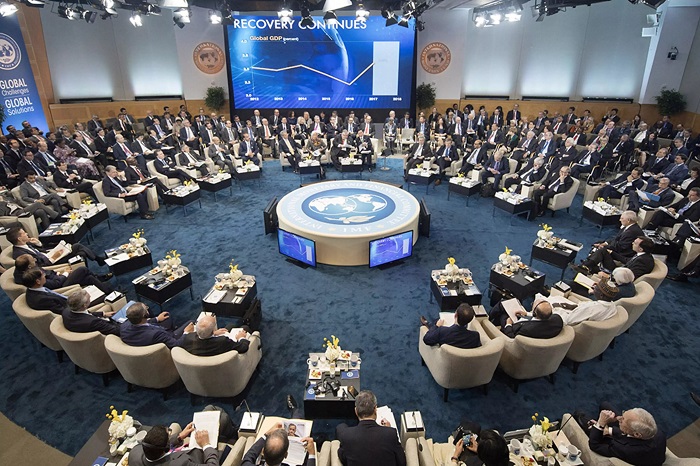 A conference at the International Monetary Fund
A conference at the International Monetary Fund
Thus, you see how fiat money can acquire developing country assets. Interestingly, China is doing something similar in its Belt and Road Initiative. This plan was introduced in the form of investment in the economic infrastructure of more than 70 countries of the world, which are on the path of the “Silk Road Economic Belt.”
China is entering the game of monetary imperialism that the United States has always played. In this scheme, China lends money and then seizes other countries’ resources after mismanaging the money. However, these investments have led to the colonization of many nations.
The moral obligation of the United States
The power to print money can create a moral obligation for powerful governments. This obligation is based on a simple premise: if you can use the money to fix a problem, you are morally obligated.
In the global arena, the United States, as the money printer, must be bound by this moral obligation. The first and most obvious way to help other parts of the world is to provide assistance and financial facilities to the central banks of other countries during economic crises.
Providing liquidity by indiscriminately printing money
This facility itself requires printing more money to provide liquidity. Printed money may be the only way to save governments in times of crisis. Still, it may eventually lead to an increase in inflation and a worsening of other countries’ economic situation.
We saw the Federal Reserve doing this for many central banks during the Covid crisis; Therefore, if a country runs out of dollar reserves to combat exchange rate volatility, the United States can replenish the ammunition of these countries’ central banks.
 The umbrella of US financial support does not open to its opponents.
The umbrella of US financial support does not open to its opponents.
In the meantime, the important thing is that the countries that follow policies opposite to the policies of the United States do not benefit from this parachute. This problem can be seen in the hyperinflation of Venezuela, Zimbabwe, and Lebanon.
The international community receives a clear message from these examples: do not anger the United States; Otherwise, you won’t get financial help when needed. Therefore, every country must inevitably move in line with the policies of the United States.
The United States also assumes many responsibilities at the international level. Easier to say America plays the role of police in many parts of the world and enters many wars. Previously, Britain, which held the former world reserve currency, also undertook such duties as part of its moral obligation. For example, the country’s army and navy were deployed to keep the peace in places far away from Britain, such as South Africa, India, and the Middle East.
The entry of the United States into the conflict between countries
Even now, the United States can do this and is taking advantage of this opportunity. Thus, we see numerous competitions between American forces around the world. The main difference between Britain and the United States is that Britain had physical possession of the colonies, But the United States held the monetary supremacy.
In addition, this country can print and spend money worldwide, taking advantage of this possibility. Expensive programs such as the Marshall Plan, which was presented for the economic reconstruction of Western European countries after World War II, were one of these programs. The Korean War began immediately after implementing this plan.
 Sending the first ship containing financial aid to France in the Marshall Plan in 1948
Sending the first ship containing financial aid to France in the Marshall Plan in 1948
At that time, the United States was looking for allies in the Cold War, and plans such as the Marshall Plan or involvement in the Korean War were among the country’s methods to maintain relations with partners. However, any country that did not receive US aid for “free” was a loser.
Effectllar, the global reserve currency, gave the US the right to pick winners and losers globally. It’s no wonder America’s most prominent allies have fared so well during the dollar’s monetary hegemony.
Countries like South Korea, Japan, Western Europe, Singapore, and Taiwan have all improved, and the United States seems to be fulfilling its moral obligations by giving more money to its allies.
Always and in any conflict, the foot of the United States is involved. Since the dollar is considered the global reserve currency, everything ends up in favor of the United States, and in any conflict, the advantage is with the side with closer ties to the United States.
American standardization at the global level
At the national level, countries tend to standardize sectors such as industrial parts, which is done through systematic training and licensing. At the international level, there is this standardization, and it is not strange that the standard is the education of American colleges and universities.
Since obtaining an academic degree from a reputable American educational institution facilitates access to income-generating jobs in this country, studying in these institutions is considered desirable worldwide.
The demand market of large companies also shows that similar standardizations are happening in other fields, and identical to the academic field, this time, we are facing the dominance of the United States over this standardization. In addition to “hard” and technical standards, “soft” and cultural norms are also formed by the influence of the United States.
The dominance of the US dollar in different parts of the world has also expanded the cultural power of this country. The root of this issue can be found in Cantillon’s work and the popularity of jobs in America.
The most successful people of any country immigrate to the United States and sometimes return to their country by reverse migration. These people, who are more American than other citizens, mainly achieve great success in their work and education; Therefore, others imitate them. Thus, American culture and values are exported to other countries, especially the importance of universities and companies.
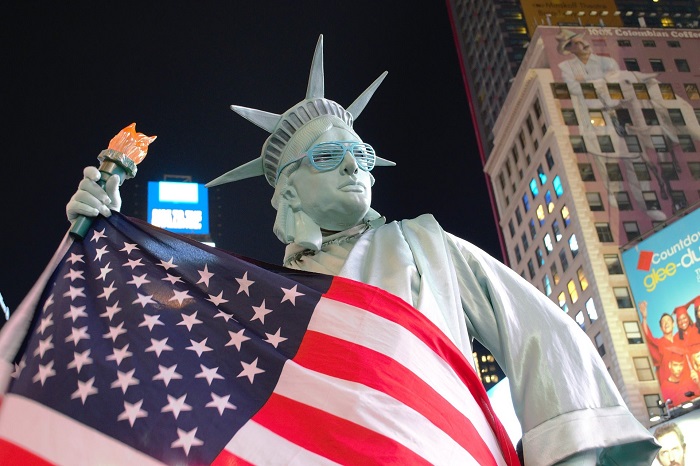 America’s financial dominance increases the popularity and spread of American culture.
America’s financial dominance increases the popularity and spread of American culture.
In addition, the highest-grossing films and most popular music and television programs originate in the United States or are heavily influenced by the United States. America has the most international money reserves and can assist these cultural industries financially. Therefore, practically every country uses English as a second language, and most people in global business follow American behaviors and standards.
Tendency to authoritarianism at the international level
Just as the responsibility of printing money causes the concentration of power and dependence at the national level and the fire of the tendency to despotism increases, the possibility of printing money at the international level also causes a significant increase in the political dominance of the United States over other countries. We can see this issue in the Ukraine war. In this case, the United States brought most of its allies into the conflict by providing them with weapons and money.
The United States sets the dominant culture and practice. In fact, in many meetings of the World Economic Forum, which is one of the sponsors of the current monetary system, policymakers gather to determine the future agenda and the prevailing political and economic culture of the world. However, this is not the whole story; Because inappropriate social behavior in the United States quickly becomes inappropriate and unacceptable in other parts of the world.
The superior and elitist point of view is put forth by the people who control the money, and the whole world has been subordinated to them. For example, the current popularity of clean energy in the world or the decrease in the use of nuclear power in the last 30 years in many parts of the world is rooted in the culture that the United States determines and then exports to other parts of the world. Also, the issue of combating racial discrimination was raised first in the United States and then spread in international circles.,
Vulnerability of the countries of the world
Although the United States has contributed to some degree of peace and stability through its economic power, this relative peace has not come without a cost. The current consensus mainly depends on trade and exchanges between large corporations that governments support. Also, the mechanism of fiat money and centralized financial dominance has caused the exclusive producer of each product to be one or two large companies.
In other words, the number of competitors for each product is minimal. Thus, reducing competition can reduce the price of products and goods and lower inflation. However, what we pay for this is a fragile and vulnerable supply chain.
During the covid crisis, the results of such vulnerability became apparent in the problems of manufacturing companies. Also, in another example, in 2012, car manufacturers suffered from production disruptions for a long time after an accident in one of the car parts manufacturing companies in Germany.
This vulnerability is not just related to the supply chain; it can be problematic regarding the world economy. The experience of the great financial crisis of 2008 in the world showed us this issue. The spark of the 2008 troubles came when the US mortgage-backed securities offering failed. This issue was the beginning of the international economic turmoil in the world.
Economic collapse at the hands of the United States
The US economy so heavily influences the global economy that a fall in the value of any asset in this country can set off a continuous domino of bankruptcies worldwide.

It is not only the companies that suffer in the meantime; Because countries also go bankrupt and show this problem in phenomena such as hyperinflation. The pressure of the international monetary system is constantly increasing on countries with weaker economies and often recipients of loans from large financial organizations.
All the countries are slowly becoming enslaved people who are servants of the International Monetary Fund or the World Bank and can no longer decide for themselves. The fate of such countries is not very interesting; Because they are usually run by a minority of power holders who control everything and deprive people of their freedom to stay in power.
Weaker countries carry only a name from their past. The life of these countries, which have been stripped of their identity and power, is entirely dependent on the significant financial loans of the organizations that support the current economic system.
Bitcoin solves this problem.
The dollar’s international dominance is a brilliant opportunity that the United States has used well to dominate the rest of the world. The result is an inequitable world classified according to Cantillon’s hierarchy and US criteria.
The best human capital is attracted to the United States, and depleted countries become obedient slaves of large financial organizations. They constantly have to lose their human and national resources.
Bitcoin can fight the unfair hegemony of the dollar. Unlike the global reserve currency, the dollar, Bitcoin has no central control; Therefore, the competition conditions will finally be fair and equal. Weaker countries will be revived and given a chance to develop instead of being controlled by their powerful masters.
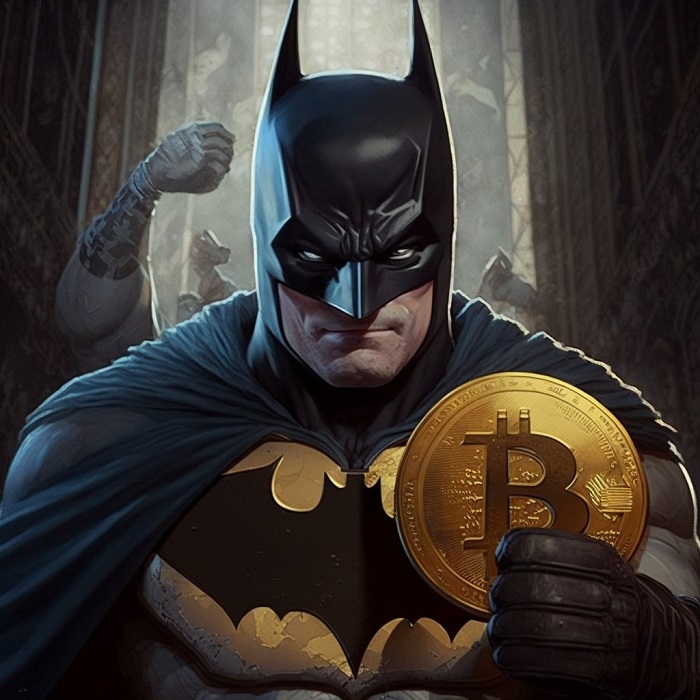 Bitcoin can fight the unfair hegemony of the dollar
Bitcoin can fight the unfair hegemony of the dollar
Instead of the United States acting as a third party to handle international disputes, countries will settle their arguments. In addition, culturally, instead of being dominated by American culture, we will witness the flourishing and growth of diverse cultures.
In this case, countries can also make better use of their human capital; Because people no longer have to immigrate to the United States to make the most of their talent. Thus, instead of power being concentrated in a country that can print money for the rest of the world, countries that provide their citizens with the most significant amount of freedom will be more successful.
The Future of Bitcoin and dollar inflation
However, there is still a long way to go before Bitcoin’s promising supremacy remains, and much more remains to be done. The dollar is still the financial support of different countries, Especially countries struggling with hyperinflation. For now, there is still a long way to go before dollar inflation is stopped; Because for people who experience hyperinflation, an annual inflation rate of 7% of the US dollar seems insignificant.
The fundamental changes will happen when excessive dollar printing causes this currency to experience severe inflation. Unfortunately, this process will take a long time. However, it might happen faster in a world with two global reserve currencies.
For example, suppose the world’s emerging powers, such as the BRICS countries (China, Russia, Brazil, and India) on one front and the United States’ allies on the other, polarize the. In that case, the inflation of the dollar may be observed quickly.
When the transition from the dollar happens, changes happen very quickly. There may be a long way to go before the inflation of the dollar, But after it falls down the slope of the fall, there is no longer any obstacle; Because trust in the dollar will not be regained.
Until then, it’s up to us as Bitcoin fans to prepare. Getting ready isn’t just about collecting bitcoins. While this is undoubtedly necessary, building the infrastructure to handle the massive wave of future demand should be a priority for Bitcoin fans.










